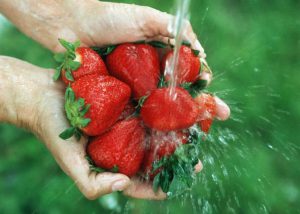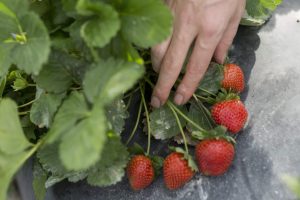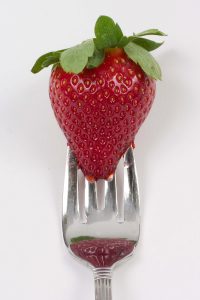It is New Year’s Day. In the cool gray dawn, you sleepily slide your feet into a pair of slippers, still half-dreaming of the night before. No one else has woken up; the first fruits of the year are yours, and yours alone.
At that thought, your eyes jolt open. The strawberries!
You race to the garden, to the raised bed full of strawberry plants you put in just three months earlier. You chose ‘Florida Brilliance’ for their early fruiting. Or maybe, if you live farther north, you picked ‘Camarosa’, a variety suited to the slightly colder temperatures.
You have been attentive, selecting the proper fertilizer and watering with soaker hoses weekly. You’ve kept an eye on the weather and protected them from any potential freeze. You set up bird netting and consulted your county UF/IFAS Extension agent about what pesticides you should use and how often.
You know they’re almost ready. You can practically taste them, sweet and initially firm, but giving way to your teeth at the slightest pressure. You’ve been eating strawberries your whole life, but this year. . . this year is special. This year, they’re your strawberries.
You approach the bed…

and begin to examine the berries. Some of them still need time, but many are at least three-quarters red. They’re ready. What will you do with them? Pancakes? Muffins? Shortcake? Or just eat them as they are?
You pick them gently to avoid bruising them, twisting them off the stem. The ripest one you pop into your mouth, biting in and savoring the juice. And then. . .
It is late September. You are in your bed. In five minutes, your alarm will sound. The taste of that strawberry lingers on your tongue.
It’s not too late. Strawberry planting season in Florida starts in late September. To start your journey to New Year’s strawberries, check out Growing Strawberries in the Florida Home Garden, recently updated to ensure that AskIFAS is giving you the best advice available.
 0
0
